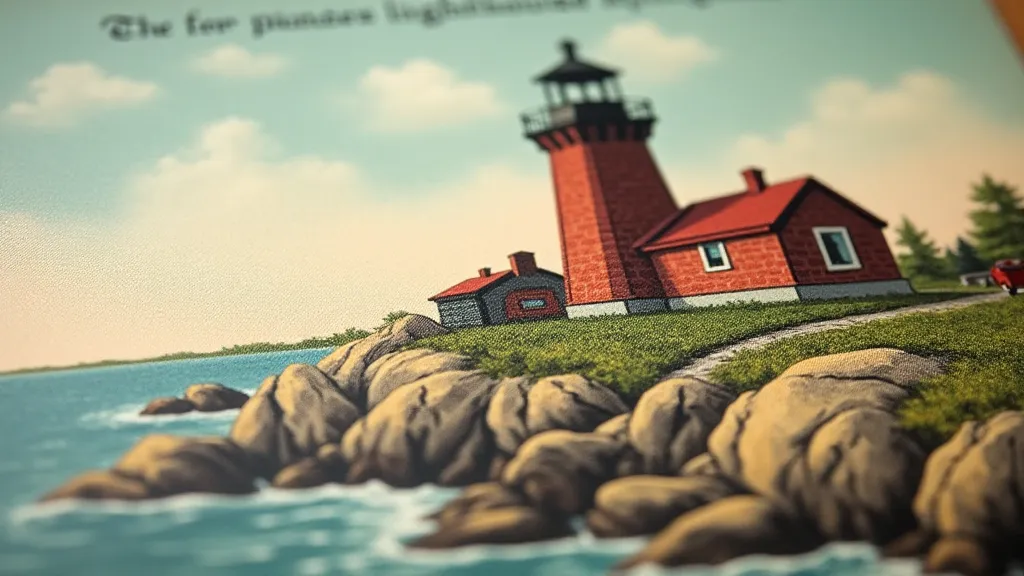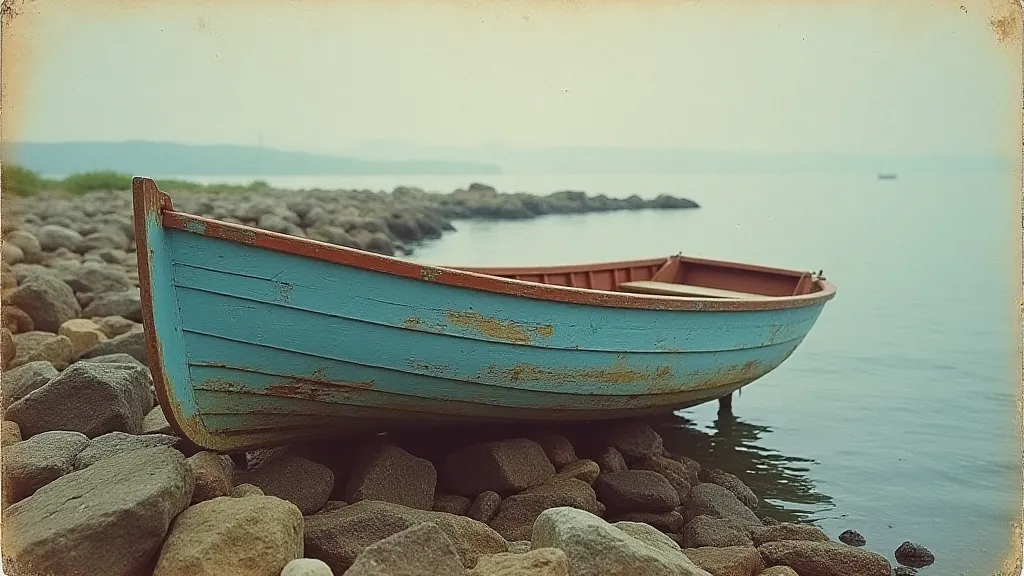The Echoes in the Tintype: Maine Postcards and the Silent Narratives of Loss
Maine. The name itself conjures images of granite-strewn coastlines, dense forests whispering with ancient secrets, and the steadfast resilience of its people. We often picture idyllic scenes: lobster boats bobbing in sapphire waters, quaint villages clinging to harbors, and a timeless quality that draws visitors from around the globe. And yet, tucked away in dusty antique shops and attic trunks, lie a treasure trove of tangible history: vintage postcards. These aren't merely pretty pictures; they are fragile windows into a past fraught with hardship, economic shifts, and the poignant reality of a transient life—a life often obscured by the romanticized portrayals we associate with the state.
The postcard boom, roughly spanning from the 1890s to the 1930s, coincided with a period of significant change in Maine. The rise of the railroads made travel easier, connecting rural communities to larger markets and fostering a burgeoning tourism industry. Postcards became a readily accessible and affordable way for people to share experiences, send greetings, and maintain connections across vast distances. But to truly appreciate these cards is to understand that they are more than just picturesque memories; they are echoes of voices long silenced, whispers of struggles bravely borne.

The Illusion of Prosperity
Many postcards showcase scenes of seemingly prosperous fishing villages and thriving lumber towns. They depict grand hotels promising relaxation and adventure, bustling docks overflowing with crates of lobsters and blueberries, and smiling families enjoying the bounty of the land. These images, carefully curated and sent across the country, served to attract visitors and investment. But behind these cheerful facades lay a reality far more complex. The lumber industry, once the backbone of Maine’s economy, faced relentless deforestation and fluctuating market prices. Fishing, too, was subject to the whims of the weather and the unpredictable nature of the ocean. Overfishing began to deplete stocks, and harsh winters often left families struggling to survive.
My grandmother, Elsie, collected postcards her entire life. She’s gone now, but I inherited her trove. I remember her meticulously sorting them, each card handled with a reverence that seemed disproportionate to its size and fragility. She often spoke of the carefully constructed narratives presented in these images and how they sometimes masked the true conditions of the people they represented. Sometimes, the message conveyed wasn’t what it seemed, leaving the recipient to wonder about the unspoken realities behind the smiling faces. This manipulation of perception, this curated presentation of reality, made understanding the historical context of these postcards even more crucial—it speaks to a desire to control the image of a place and its people.
One postcard in particular stands out: a vibrant depiction of a grand hotel in Bar Harbor, circa 1910. The scene is idyllic – elegantly dressed guests strolling along a manicured lawn, the hotel itself gleaming in the sunshine. But on the back, in faded ink, a brief message: "Hard times here. Lost the farm. Send help." It’s a jarring juxtaposition – a symbol of apparent luxury masking a desperate plea for survival. Elsie never spoke about this card, but I always felt the weight of that silent story, the crushing disappointment hidden beneath the smiling façade. It highlights how often the seemingly perfect facade of prosperity could conceal deep-seated struggles. Often, the recipient might never have known the true story—highlighting the deliberate effort to present a curated reality.
The Transient Nature of Place
Another recurring theme in these vintage Maine postcards is the subtle, yet undeniable, sense of impermanence. Many towns that flourished in the early 20th century have dwindled or vanished altogether. Rail lines that once crisscrossed the state have been abandoned, their tracks reclaimed by the forest. Buildings that once housed thriving businesses now stand as crumbling ruins, silent witnesses to a bygone era. The deliberate manipulation of image and the fragility of prosperity itself contributed to this impermanence; the stories presented on these cards often became relics of a vanished way of life.
Look closely at the architecture depicted on these cards. Many buildings were constructed from readily available local materials - timber, granite, and clapboard. The lack of modern construction techniques meant that these structures were inherently vulnerable to the elements. Coastal erosion and harsh winters took their toll, slowly but surely dismantling the physical landscape. The postcard itself becomes a monument to a place that once was, a tangible reminder of the relentless march of time. Sometimes, the very act of sending a postcard became a way to document, almost mournfully, the fleeting nature of a place and its people – a silent acknowledgement of its eventual disappearance. The inherent bias present in the selection of what was deemed worthy of sending also reveals what was considered significant at the time, illustrating the values and priorities of a bygone era. To understand the postcard, one must grapple with the questions of who chose to send them and what story they wanted to tell.
The Craftsmanship and the Stories Within
Beyond their historical significance, vintage Maine postcards are also remarkable examples of early 20th-century craftsmanship. The photographic processes used—often variations on the albumen print or photogravure—required considerable skill and artistry. The color palettes, painstakingly achieved through hand-tinting, add a layer of visual richness and emotional resonance. Examine the details – the way the artist captured the texture of the granite cliffs, the subtle play of light on the water, the intricate patterns in the clothing. These weren’t mere snapshots; they were carefully composed works of art. Understanding the limitations and nuances of these early printing techniques helps us appreciate the artistic choices made by the photographers and colorists, adding another layer of meaning to these historical artifacts. Sometimes, a faded image or a slightly crooked print can speak volumes about the time and effort invested in creating these seemingly simple mementos.

Restoring these postcards isn’t simply about preserving a physical object; it’s about safeguarding a piece of history. Gentle cleaning, careful mounting, and archival storage can help to prevent further deterioration. But it’s crucial to avoid aggressive restoration techniques that could compromise the card’s integrity or erase its unique character. The imperfections – the foxing, the fading, the creases – are all part of the story. This careful consideration for preservation speaks to the enduring value we place on these fragile reminders of the past, acknowledging their importance in piecing together a complete picture of Maine's history.
The Tourist's Gaze and the Constructed Image
The images on these postcards weren’t always a completely accurate reflection of reality. They were often crafted to appeal to a particular audience – potential tourists and investors looking for a glimpse of an idealized Maine. The selective presentation of information – highlighting scenic beauty and economic prosperity while downplaying hardship and decline – was a deliberate strategy to shape public perception and attract visitors. This careful construction of an image reveals the power of visual media to influence opinions and create a desired narrative. A closer examination of the imagery suggests a deliberate attempt to create an enduring romanticized vision, which, while appealing to a broader audience, doesn’t always align with the complete reality of life in Maine at the time. These postcards provide valuable insights into how public images were created and manipulated to promote a specific vision of a place. Sometimes, even the choice of which angle to photograph a scene, or which details to emphasize in the colorization process, contributed to this deliberate construction of an image.
A Legacy of Resilience
The world of vintage Maine postcards is a complex and rewarding one. They offer a unique window into a past marked by both hardship and hope, loss and resilience. By examining these seemingly simple images, we can gain a deeper appreciation for the lives of those who came before us and the enduring spirit of the state. They remind us that behind every idyllic landscape lies a tapestry of untold stories, waiting to be discovered. Sometimes, the most poignant stories are the ones that aren't explicitly told, requiring a deeper understanding of the historical context and a willingness to look beyond the surface. It's in those unspoken narratives that we find the true essence of a place and its people.
My grandmother Elsie would often say, “These aren’t just pictures, dear. They’s memories. They’s the voices of people who lived and loved and lost.” And she was right. Each vintage Maine postcard is a fragile echo, a silent narrative of a time gone by—a testament to the enduring power of the human spirit. Examining the history of the postcard itself – the deliberate choices made in its creation, distribution, and reception – offers a fascinating glimpse into the cultural values and social dynamics of a bygone era. The absence of a return address on many of these cards, for example, sparks further questions about the senders and recipients and the nature of their relationship. It suggests a deliberate desire for anonymity, or perhaps a fleeting connection that was never meant to be repeated. These postcards stand as tangible testaments to the complexities of human relationships and the enduring power of memory. To truly appreciate the stories embedded within these cards, one must consider the wider context of the time, including the social, economic, and technological forces that shaped their creation and circulation. Further study of the factors contributing to the “postcards’ silence” – the deliberate omissions and unspoken narratives – can provide even deeper insights into the history of Maine.






